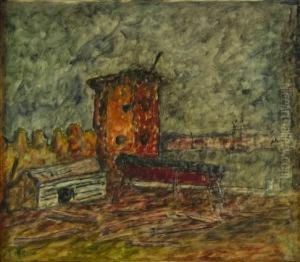Emanuel Vidovic Paintings
Emanuel Vidović was a distinguished Croatian painter, born on December 24, 1870, in Split, which at the time was part of the Austro-Hungarian Empire and today is located in Croatia. He is often regarded as one of the most important artists in Croatian history, particularly noted for his role in the transition from traditional 19th-century art to modern 20th-century art in Croatia.
Vidović showed an early interest in art and began his formal education at the Academy of Fine Arts in Venice, which was one of the most prestigious art schools of the era. After his studies in Venice, Vidović spent some time traveling and working throughout Europe, absorbing various artistic influences, which included Impressionism and the Secession movement. His work was characterized by a strong use of color and an evolving style that reflected his exposure to different art movements and his own personal growth as an artist.
Throughout his career, Vidović experimented with various themes and techniques. He is particularly known for his landscapes and cityscapes, often depicting scenes from his native Dalmatia, a coastal region of Croatia. His paintings of Split and its surroundings capture the unique Mediterranean light and the beauty of the Adriatic Sea. Vidović was also an accomplished portraitist and still-life painter, demonstrating a versatility that won him admiration from both his contemporaries and later generations.
In addition to painting, Emanuel Vidović was involved in the cultural life of Split. He was one of the founders of the Society of Fine Artists in Split and actively participated in the organization of art exhibitions. His work was recognized with several awards during his lifetime, and he held numerous solo exhibitions.
Emanuel Vidović passed away on June 1, 1953, in Split. His legacy includes a significant contribution to the development of modern Croatian art. Today, his work is held in high esteem, with many of his paintings displayed in Croatian museums, such as the Emanuel Vidović Gallery in Split, which is dedicated to preserving his memory and showcasing his art.
